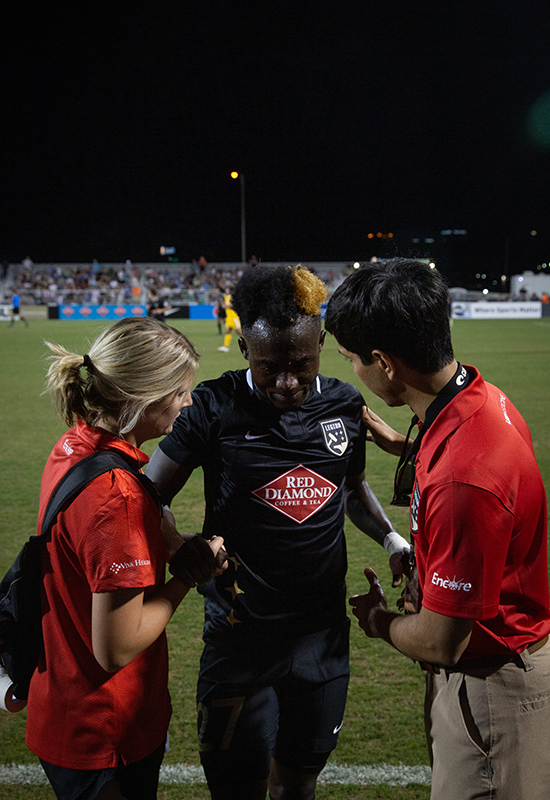Media contact: Bob Shepard
 UAB Sports and Exercise Medicine provides medical care for amateur and professional soccer teams in Birmingham.While Sundays in America are reserved for plenty of football this time of year, this weekend global football — or soccer — kicks off its premier men’s event. The 2022 FIFA World Cup begins Sunday, Nov. 22 in Qatar with an opening match between Qatar and Ecuador. The U.S. men’s soccer team will see their first match against Wales on Monday, Nov. 21 at 1 p.m.
UAB Sports and Exercise Medicine provides medical care for amateur and professional soccer teams in Birmingham.While Sundays in America are reserved for plenty of football this time of year, this weekend global football — or soccer — kicks off its premier men’s event. The 2022 FIFA World Cup begins Sunday, Nov. 22 in Qatar with an opening match between Qatar and Ecuador. The U.S. men’s soccer team will see their first match against Wales on Monday, Nov. 21 at 1 p.m.
Like any contact or team sport, soccer is no exception to player injuries. UAB Sports & Exercise Medicine, part of the Department of Orthopaedic Surgery at the University of Alabama at Birmingham, serves as the medical provider for many local soccer teams.
“We see many soccer-related injuries in the clinic throughout the year especially through our partnerships with local youth, collegiate and professional soccer teams — such as the Birmingham Legion FC,” said clinical care coordinator Ashley Williamson. “The majority of soccer injuries, up to 90%, are to the lower extremities.”
Williamson offers strategies to mitigate injuries when playing soccer:
Wear appropriate protective equipment – In soccer, shin guards are designed to aid in the prevention of fractures to the lower leg. Fractures account for almost 33% of all injuries in soccer.
Pre-season conditioning – Training and conditioning during the off-season can be a major influence on the occurrence and avoidance of injuries. Studies show that even seven weeks of pre-season training can decrease chances of injury during regular season.
Dynamic stretching before practice and play – Dynamic stretches are active movements that allow the joints and muscles to move through full range of motion. Dynamic stretches are proven to have better outcomes than traditional static stretching. Studies show that dynamic stretches improve acceleration and agility, which is an added bonus.
Practice proper technique for heading the ball – Concussions in sports are such a hot topic right now and one study showed that teaching proper heading techniques to youth soccer players reduced the prevalence of concussions during the season. Teaching points include: Making eye contact with the ball, maintaining an athletic stance, contacting the ball using the forehead and upper trunk follow-through.
Maintain proper nutrition and hydration – Staying hydrated and eating the right foods is key to optimal performance, especially in soccer. Nutritionists recommend to prioritize eating carbohydrates and proteins 30-to-60 minutes after practice or a game. Athletes are also encouraged to drink 1 ounce of water per pound daily.
